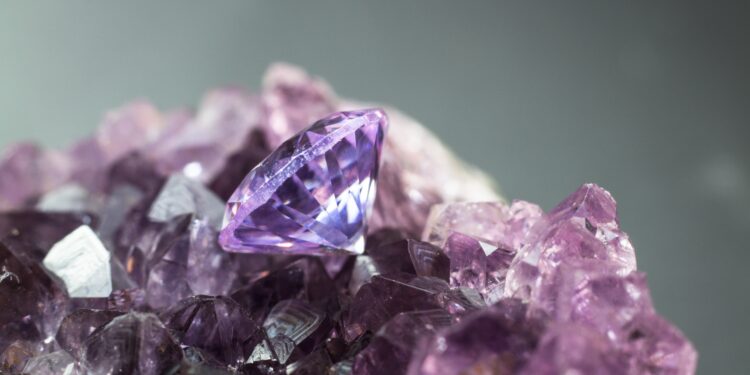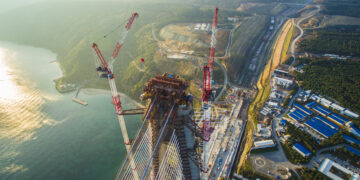Critical Metals Corp. (NASDAQ:CRML) is rapidly emerging as one of the most geopolitically significant companies in the global race for critical minerals. Based in New York and listed on the Nasdaq, the company has captured Washington’s attention by controlling the Tanbreez rare earths project in Greenland — one of the world’s largest undeveloped sources of heavy rare earth elements. In a development that underscores both strategic urgency and political complexity, Trump administration officials have reportedly discussed taking an equity stake in Critical Metals Corp., giving the U.S. government direct exposure to Greenland’s most prized mineral deposit. This comes as the United States accelerates its efforts to secure alternative supply chains for rare earths, lithium, and gallium — materials essential for electric vehicles, wind turbines, advanced weaponry, and semiconductor production.
The proposed deal would represent a striking political turn in a saga that has stretched across two presidencies. Former President Joe Biden’s administration previously supported Critical Metals’ $216 million acquisition of the Tanbreez project — consisting of $5 million in cash and $211 million in stock — which effectively blocked a Chinese bidder offering a higher price. The Trump administration’s consideration of a direct investment, potentially through a $50 million equity conversion, would now deepen U.S. strategic control over Greenland’s mineral assets. If finalized, the transaction could give Washington up to an 8% ownership stake in Critical Metals, further cementing the company’s role as a linchpin in America’s new energy and defense supply chain strategy.
The Geopolitical Chessboard Behind Greenland’s Rare Earth Boom
Greenland’s Tanbreez project, located near the southern coast of the Arctic island, has long been viewed as one of the world’s most promising rare earth deposits. Estimated to hold more than 4 million metric tons of rare earth oxides, the site represents a potential game-changer in reducing Western dependence on China, which currently controls over 90% of the global supply chain for rare earth extraction and processing. Rare earths are indispensable to high-tech industries, from electric vehicles and clean energy systems to missile guidance and radar equipment — making them not just an economic asset but a matter of national security.
Critical Metals’ acquisition of Tanbreez in 2024 gave the U.S. a rare foothold in this critical mineral segment. Now, with discussions of a direct government equity stake, the company’s future could become intertwined with American defense and industrial policy. According to sources familiar with the matter, the administration has been exploring the possibility of reallocating up to $2 billion from the Chips and Science Act — originally intended to bolster semiconductor production — to finance critical mineral projects. If approved, this could channel additional funding toward Tanbreez and other strategically vital resource developments.
The U.S. Export-Import Bank (EXIM) has already shown confidence in the project, considering a $120 million loan to accelerate technical development and prepare the mine for commercial production. Critical Metals has indicated that the total cost of bringing Tanbreez to full operational status will be approximately $290 million, with production slated to begin in 2026. Once operational, the mine is expected to yield 85,000 metric tons of rare earth concentrate per year, alongside valuable byproducts such as gallium and tantalum — both of which have seen tightening global supply following China’s export restrictions.

CHECK THIS OUT: Gyrodyne (GYRO) Lands $28.74M Deal for 49 Acres in St. James, NAV Jumps 6% and NioCorp (NB)’s $1.14B Elk Creek Project Set to Transform U.S. Critical Minerals Supply.
Strategic Positioning Amid Washington’s New Resource Diplomacy
This potential U.S. investment in Critical Metals represents a larger shift in America’s industrial strategy. The Trump administration’s renewed focus on domestic and allied mineral production marks a decisive move away from dependency on Chinese-controlled supply lines. It follows similar U.S. investments in Lithium Americas Corp. (NYSE: LAC) and MP Materials Corp. (NYSE: MP) — both critical players in the lithium and rare earth value chains. By extending financial and potentially equity support to Critical Metals, Washington would ensure that future supply of essential minerals flows through trusted channels within U.S. and NATO-aligned jurisdictions.
Greenland itself has become an unexpected hotspot in this geopolitical contest. Though a semi-autonomous territory under Denmark, it has become the focus of U.S. strategic interest due to its mineral wealth and geographic proximity to the Arctic — an increasingly vital region for trade and military positioning. President Trump famously suggested buying Greenland in 2019, an idea once dismissed as political theater but now reflecting a clear recognition of the island’s value in the new age of resource competition.
Biden officials also maintained diplomatic momentum, with visits to Greenland’s capital, Nuuk, as recently as late 2024 to encourage private and public sector investment. In March 2025, Vice President JD Vance followed suit, symbolizing bipartisan consensus that Greenland’s mineral assets must remain under Western influence. The ongoing negotiations with Critical Metals thus represent a culmination of years of quiet but determined policy aimed at ensuring Western access to strategic resources in the Arctic region.
The Economics of a Critical Mineral Powerhouse
Beyond politics, Critical Metals’ fundamentals are beginning to take shape as a solid industrial story. The Tanbreez project’s economic viability rests on its combination of high-grade resources, scalable output, and direct access to North Atlantic shipping lanes — a critical logistical advantage in an otherwise remote location. While infrastructure development in Greenland remains challenging due to extreme weather and terrain, the proximity of the site to navigable waters significantly lowers the cost of export logistics.
The company’s financial architecture is equally strategic. The potential EXIM loan would finance early production and infrastructure, while the Defense Production Act (DPA) grant application worth $50 million — now under review for conversion into equity — would provide non-dilutive funding to advance construction. Moreover, recent reports suggest that Critical Metals may seek additional financing through strategic partnerships or offtake agreements, potentially locking in long-term revenue streams.
Once operational, Tanbreez will not only produce light and heavy rare earth elements but also critical byproducts that align with defense and semiconductor applications. Gallium, for instance, is essential for advanced radar, 5G technology, and chip manufacturing. With China tightening export restrictions on gallium and germanium, Western industries are under mounting pressure to diversify their supply — and Critical Metals could be a direct beneficiary of this shift.
Market Impact and Investor Outlook
Investors are beginning to recognize that Critical Metals Corp. represents more than a speculative mining play — it’s a strategic asset within a redefined global economy. With the United States signaling potential direct ownership and financial backing, CRML could transition from a small-cap exploration stock into a cornerstone of North America’s critical mineral independence strategy. The company’s exposure to both rare earths and battery metals (through the Wolfsberg lithium project in Austria) provides dual-commodity diversification that strengthens its long-term value proposition.
The bullish outlook for CRML hinges on three converging factors: rising geopolitical urgency, robust U.S. government support, and the exponential demand for rare earths in next-generation technologies. Should the government’s stake materialize and the EXIM financing proceed, Critical Metals would likely gain a valuation re-rating similar to MP Materials’ early trajectory following its strategic partnerships with the Pentagon and Tesla.
However, investors must also weigh risks — including logistical hurdles, environmental scrutiny in Greenland, and execution challenges in scaling operations. Yet these risks are counterbalanced by an unprecedented policy tailwind and a market hungry for secure supply. As the United States realigns its industrial priorities under the Trump administration, companies like Critical Metals Corp. could emerge as flagship beneficiaries of America’s 21st-century resource strategy.
The Bottom Line: From Political Symbolism to Strategic Supremacy
Critical Metals Corp. embodies the convergence of technology, geopolitics, and national security. What began as a little-known acquisition of a remote Arctic deposit has now transformed into a high-stakes project with direct U.S. government involvement, potential public equity participation, and global supply chain implications. The Tanbreez mine’s success could redefine America’s role in the global rare earth market and reduce decades of dependence on Chinese exports.
With production targeted for 2026, a projected output of 85,000 tons per year, and strong policy momentum behind it, Critical Metals stands at the threshold of becoming a strategic powerhouse. Whether viewed through the lens of national interest, clean energy transition, or long-term capital growth, CRML represents a unique fusion of politics and profit — a company whose future may well shape the next chapter of America’s industrial independence.
READ ALSO: CEL-SCI (CVM) Stock Could Explode After Saudi Breakthrough Deal and Ondas Holdings (ONDS) Lands $2.7M Defense Order.






